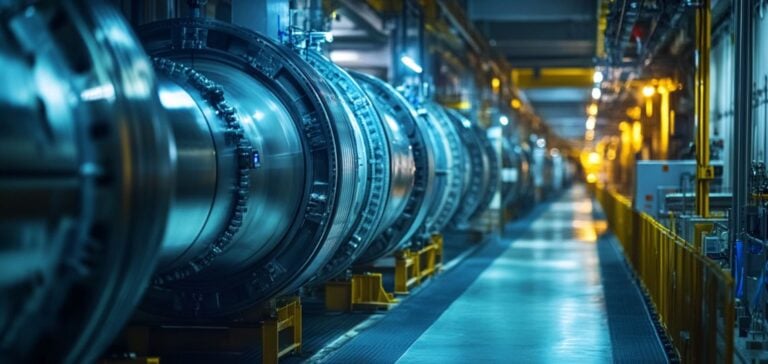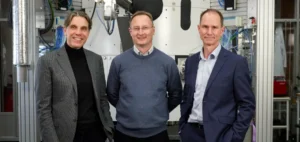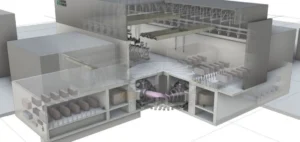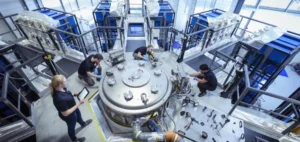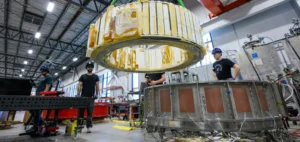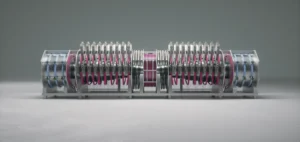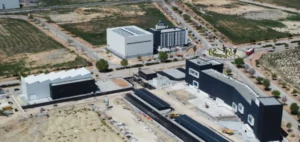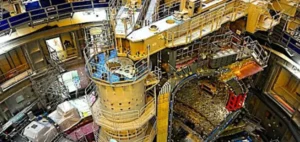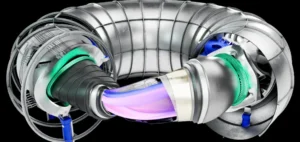The LIBRTI (Lithium Breeding Tritium Innovation) program, led by the UK Atomic Energy Authority (UKAEA), is emerging as a central player in the race for fusion energy. With a £200 million budget, the project aims to tackle technical challenges related to the sustainable production of tritium, an indispensable isotope for powering future fusion reactors.
This program is part of the broader “Fusion Futures” initiative, aimed at transforming fusion energy into a viable large-scale resource. The main challenges focus on developing “breeder blankets,” systems critical for ensuring a self-sufficient fuel cycle.
An Innovative Neutron Source at the Core of Research
LIBRTI is acquiring a next-generation neutron source supplied by SHINE Technologies, a US-based company from Wisconsin. This deuterium-tritium fusion system, operating at 14 mega-electron volts (MeV), will be installed at the Culham Campus in Oxford by 2027.
This system will recreate fusion reactor conditions to test and optimize the materials required for future breeder blankets. John Norton, LIBRTI Director, emphasized: “This unique neutron source will allow us to explore a wide range of materials and configurations, paving the way for significant advancements.”
For SHINE Technologies, the collaboration represents a strategic milestone. Greg Piefer, CEO, stated: “Fusion spectrum neutrons are essential to validate critical materials and build scalable fusion energy systems.”
Targeted Funding for Innovative Projects
In parallel, UKAEA is investing £9 million to support 12 experimental projects focused on tritium breeding and digital simulation. These initiatives, involving universities and international companies, aim to develop pioneering solutions in the field.
Among the selected projects:
– TRI-PRISM, led by Kyoto Fusioneering, is developing real-time sensors to monitor tritium permeation.
– The University of Birmingham is creating a lithium ceramic breeder equipped with integrated tritium detection.
– Amentum Clean Energy is working on a digital twin to model lithium flow dynamics.
These initiatives demonstrate the diversity of approaches adopted, blending industrial expertise with academic advances.
A Digital Strategy to Guide Future Installations
LIBRTI is also prioritizing the development of a sophisticated digital platform. This includes a Building Information Management (BIM) system and multi-physics simulation models.
This strategy enables the replication of material performances in simulated environments, ensuring optimized designs for future fusion plants. Amanda Quadling, Executive Director for Fundamental Fusion Research at UKAEA, noted: “We are moving from scientific experimentation to a phase where the supply chain can have confidence in breeder systems.”
By combining physical experimentation and digital strategies, the LIBRTI program seeks to transform fusion research into a robust industrial framework, ready to address the energy challenges of tomorrow.


